
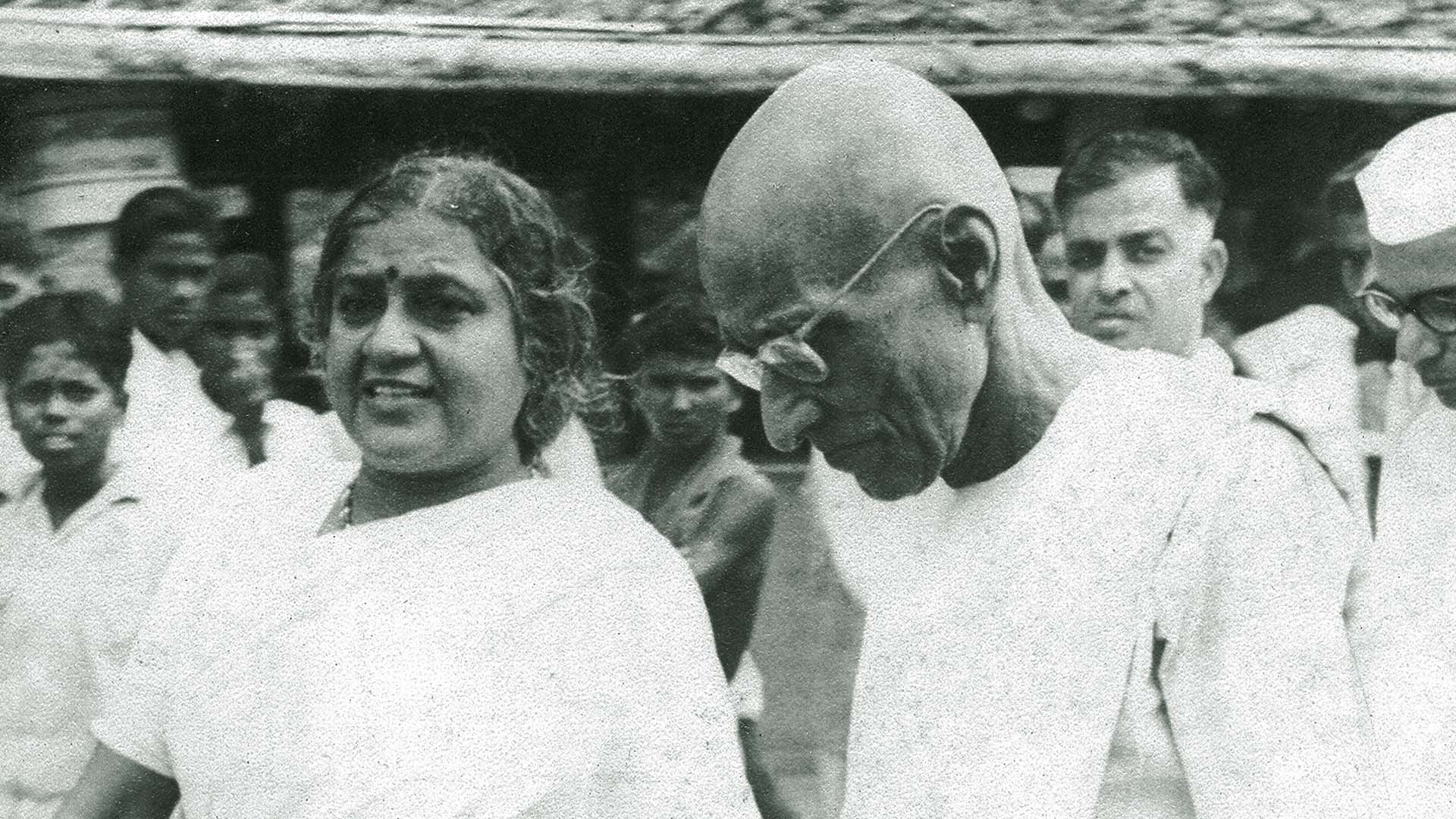
Gandhigram

In the summer of 2019, I had the opportunity to work with Think Gudd, a cause communication studio based in Bangalore. I worked as a Design Intern for multiple projects in the fields of Communication design, Filmmaking and Interaction Design. Think Gudd is associated with many NGOs to reach out to more people by building their identity, strategizing their campaigns and creating an online presence. I worked with some of these organizations from 3rd June 2019 to 8th July 2019, namely Gandhigram Trust, Khadi and Village Industries, Agastya Foundation and NIAS Workshop. It was a month filled with travel, work, fun and meeting new people.
I worked with my batchmate Harshit Satija, to serve the organizations listed. We developed a Website and a Video for both Gandhigram and Khadi and Village Industries, to create a better online presence and make people aware about their noble cause. We worked together on another film together with Agastya International Foundation to promote their I-Mobile lab. We also, along with our mentor Subramanyam Shastri, conducted a workshop at NIAS for improving illustration skills in children.

Learning the Process of Organic Dyeing
Website Redesign of Gandhigram
Gandhigram Trust works to enhance the socio-economic status of village communities through interventions in sectors like health and education following Gandhian principles. The outreach programs are aimed at promoting the establishment of village industries and providing rehabilitation to those in need. The Trust overviews 16 organizations in the field of Education, Healthcare, Community Development and Rehabilitation, listed below:
To study the functioning by the trust, we travelled to Gandhigram and Sivasailam to observe and interview the people who were managing different sectors. We received help from Subramanyam, who helped translate and guided me as well. We also talked with the people who were working in different sectors of the trust. On interviewing an artisan we found that his family had been with the trust for three generations. He also told how he studied in the school of trust itself and continued the profession after his father. After noting down the information and interpreting the interviews we were able to categorize the work done by different sectors of the trust.The trust was very proud of their legacy so we also looked at their archives and studied their history. This made me sensitive to the problems that they solved in the past and how they are fighting current problems.
We studied Gandhian philosophies and read his texts like Third Class in Indian Railways. Then we analysed how the trust were following his principles like self-reliance and sustainability while creating jobs among themselves. After that we studied the current website to find the information architecture and the problems in that.
After having done the research we re-categorized the work done and divided it into following 4 categories : Education, Healthcare, Rehabilitation and Community Development. This was the starting point. Then we began with current website’s information architecture and added multiple points which we felt were necessary. After that we grouped up the information what we could.

Information Architecture
First we defined a rough target audience can be and then took it from
there. Then we made some personas to figure out in what order the user
would require information and how would he want to navigate between
information. Then this sort of clubbed the information pieces into
different pages for us.
After deciding the pages and the content on them, we started making the
flow and navigation between them.

User Group and Flow.
We created a modern/contemporary version of the website with a subtle yet engaging aesthetic. The idea was to give a neutral interpretation of the institution’s philosophy, visually. This was achieved by using photographs to reduce cognitive load over the website along with a huge amount of negative spaces. Keywords - Un-ornamented, Soothing, Calm, Comfortable, Legacy, Authentic, Honest, Resolute, Natural
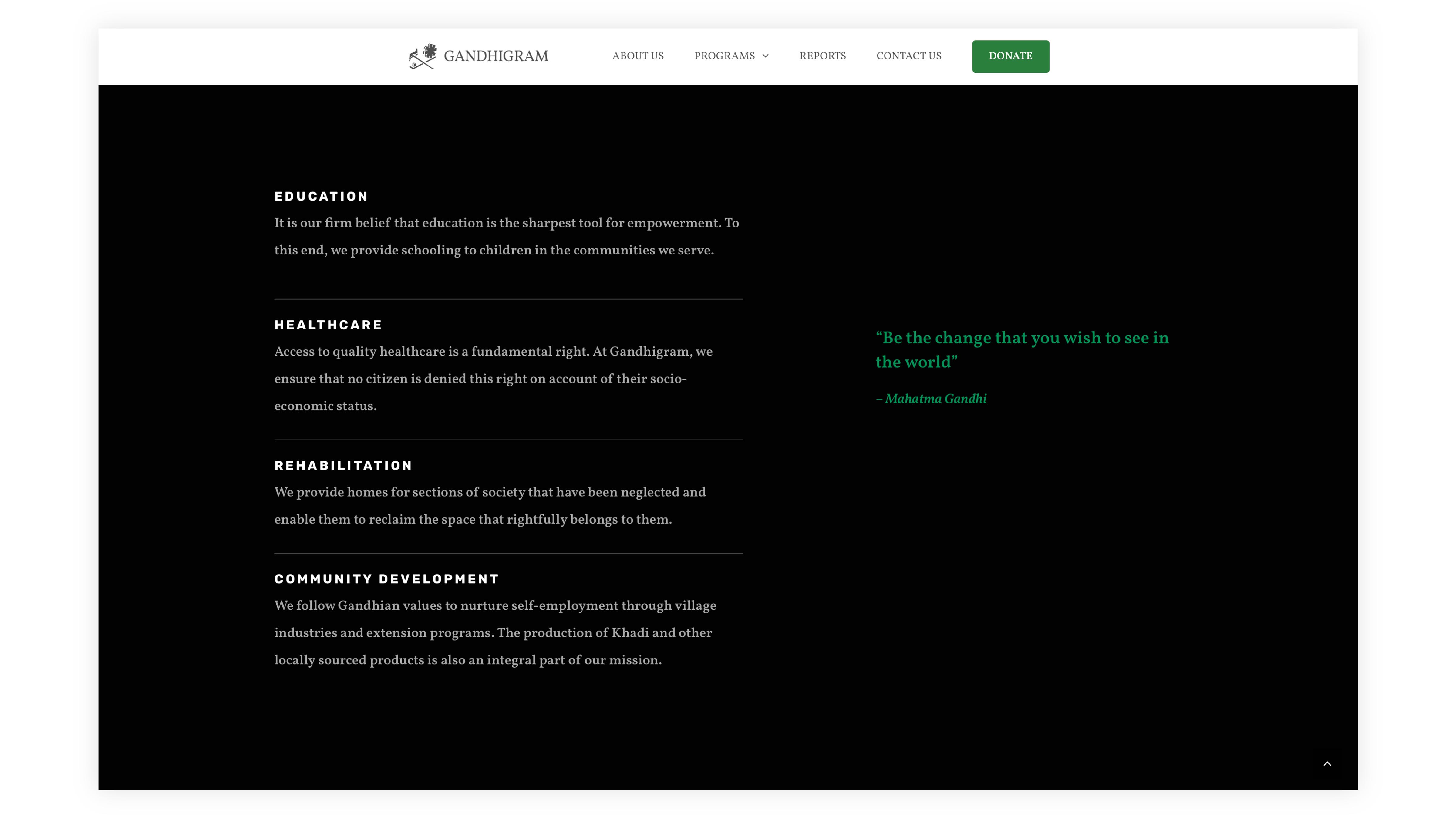
Website Page
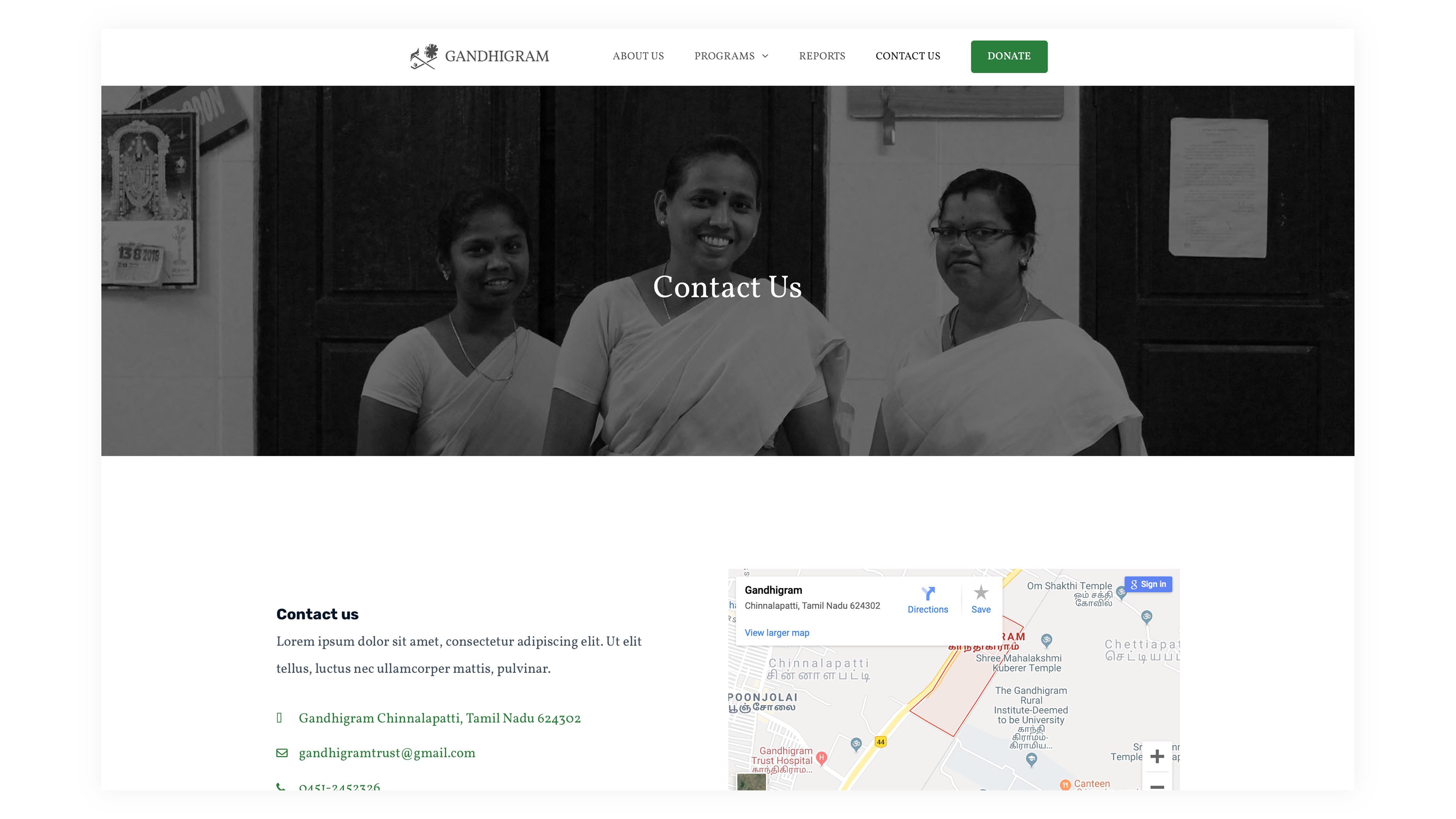
Website Page
The colour palette reflects the neutrality in interpretation of the website. It also reflects the Soothing, Calm, Comfortable feeling that was required for the website.

Color Palette
The interactions were kept very subtle with the theme. Ease in-out fades were incorporated inn the website to provide a sense of calmness.
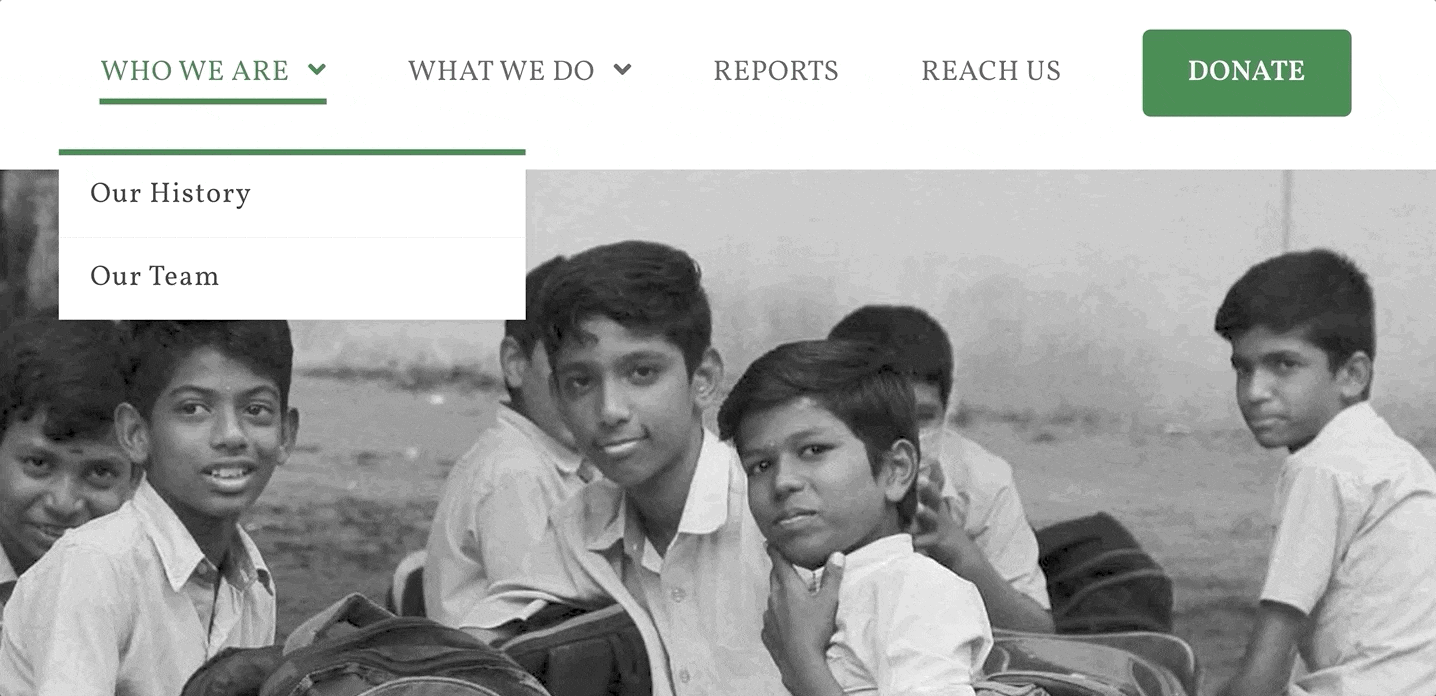
Interactivity
We searched a variety of serif open source fonts like Crimson Text, EB Garamond, Cormorant Family, Vollkorn, Amiri etc. Most of the fonts had a less no. of variations. The Cormorant family, Crimson Text and Vollkorn had a fair number of styles. The contrast of the Cormorant family is too low to be legible. Vollkorn was finalized along with a sans-serif font - Rubik.
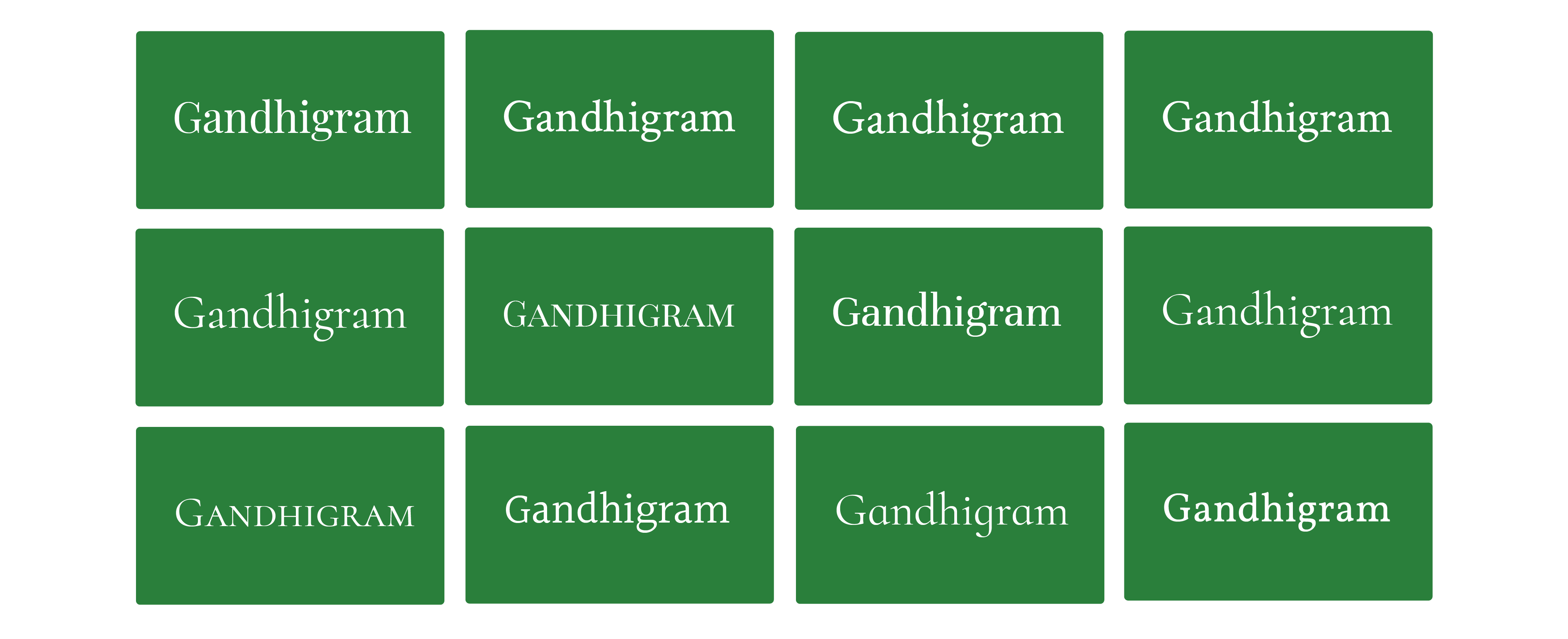
Exploring Fonts
The logo of the Trust was redesigned to complement the modern/contemporary look of the website. Multiple iterations of the logo resulted in selecting a three dimensional version of the logo. Favicon was also extracted from the logo that was used in the main site.
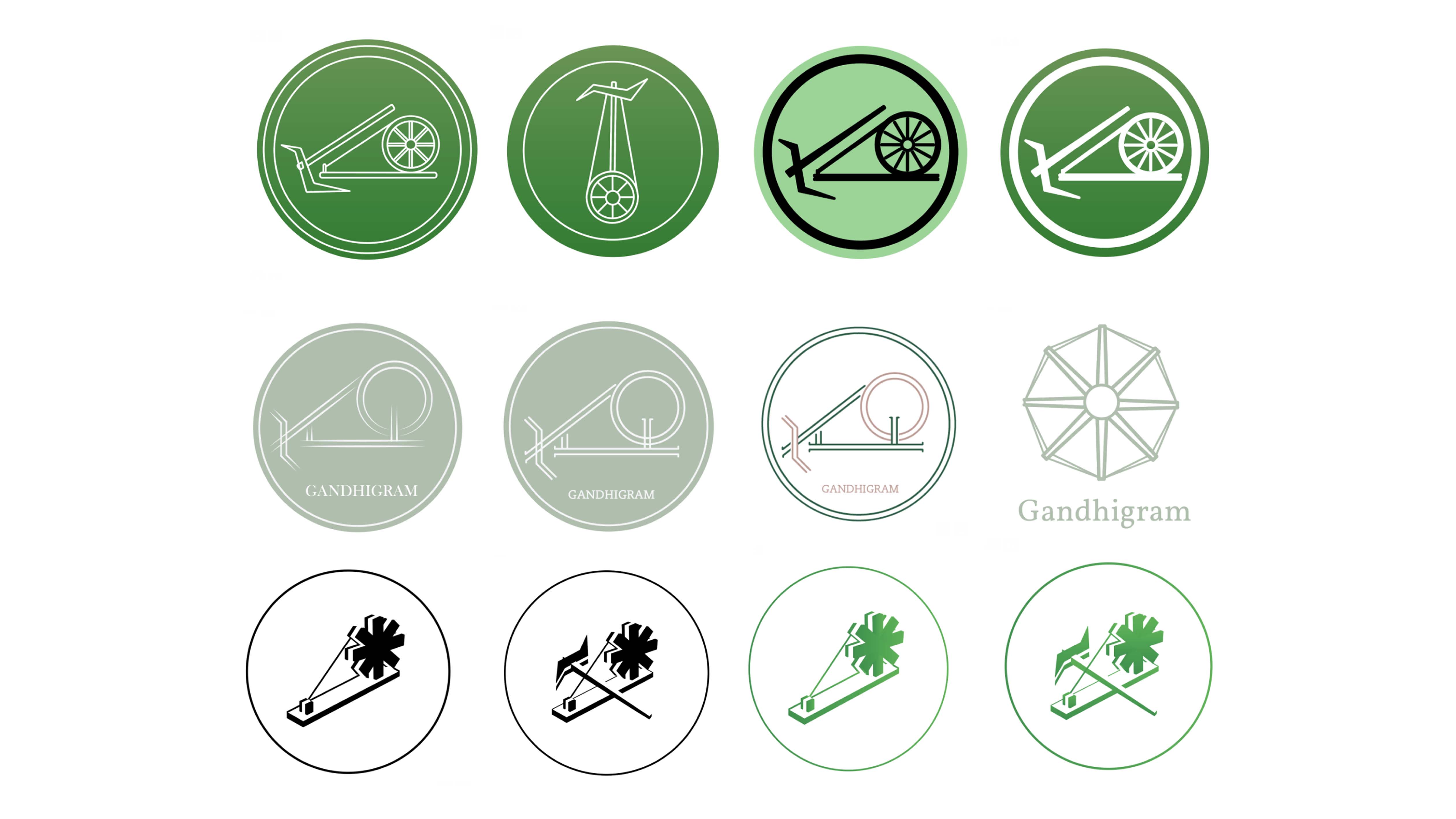
Logo Explorations
Final Logo and Favicon
The layout of the website consists of jumps between fully stretched images to a narrow column and centre aligned text format. Use of white space was intended to focus on the content and also provide a neat and spacious experience to the user. A hamburger was placed in place of the menu for the mobile and tablet version of the website. The content was managed according to the screen size of each of the default devices.
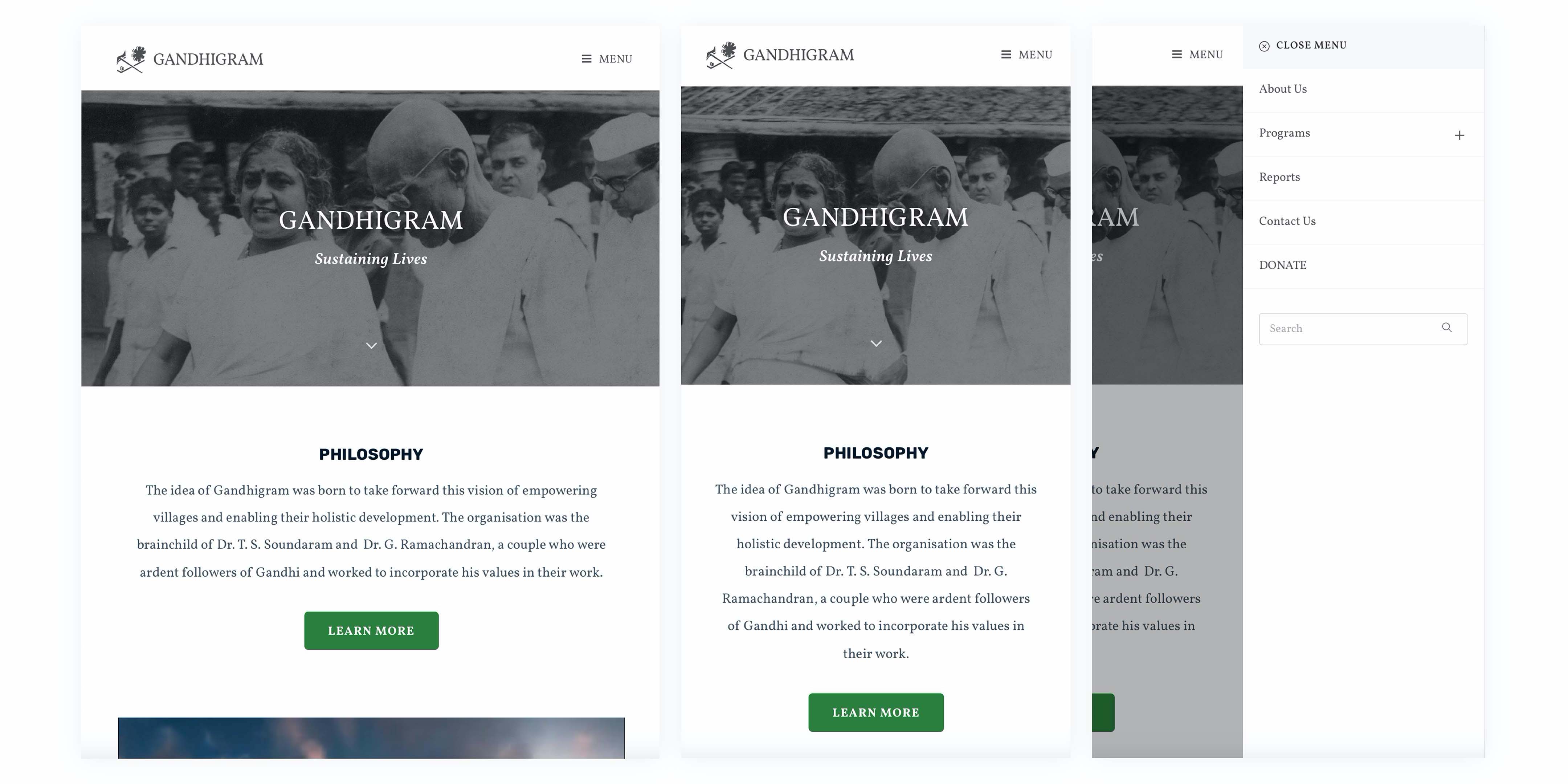
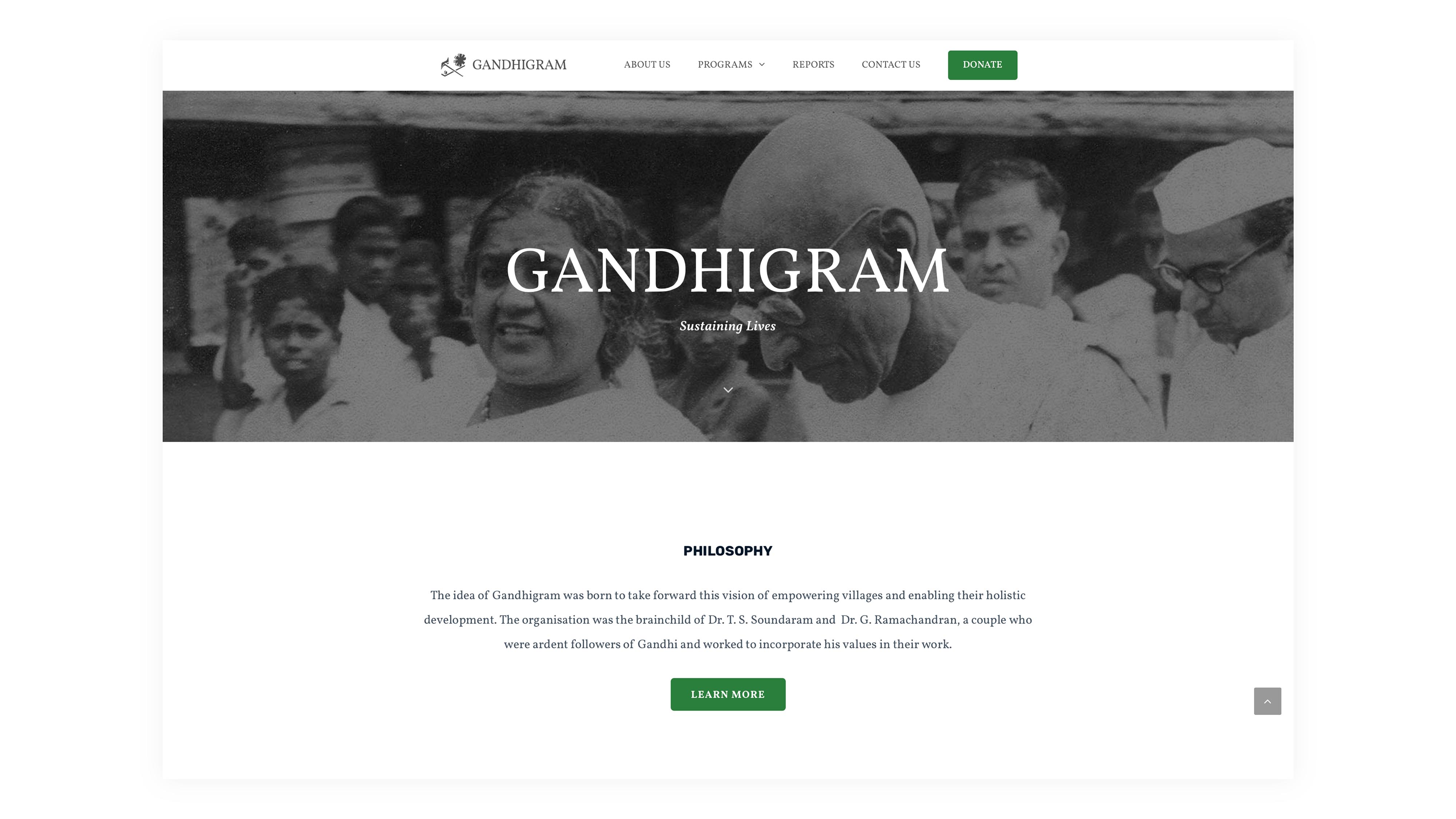
Responsiveness
Video for Gandhigram
The focus of the video was to create a call for action in the viewer and make them contribute to the organization in one way or another.
The focus of the video was to create a call for action in the viewer and make them contribute to the organization in one way or another. Gandhigram has a very rich legacy and the problems that they have solved since their inception, Thus it became the main focus to create the cause in the viewer’s eyes.
After a lot of discussion, two ideas materialized, one of which was to go linear and show the importance of Gandhigram by going into a hypothetical scenario where It didn’t exist, thus creating a call for action. The second was to create the importance by showing the current state and then going back in time to show the changes brought by Gandhigram, thus creating its importance. After a lot of simulations and watch existing videos of same kind, we went ahead with the first idea.
For the first part of history, the shots selected were from the archives, showing the development of Gandhigram. Then for the current work done by the different sections, we decided to focus on the people and capture their emotions, to bring the emotional connect.
The Edit was done with the music and the length of the shots were also kept rhythmic so as the video harmonizes with the song. Certain times a motion was kept in between the cuts, so as the viewer doesn’t feel visual jerks.
The Dynamic Typography used was kept similar to the subtle theme. The appearance of text slowly creates a calm and soothing feel, like how one feels in Gandhigram itself.
The music used for the video is a royalty free song complementing the importance of legacy and development of the trust. Change of pace of the song at certain positions emphasizes each subtopics in the video.